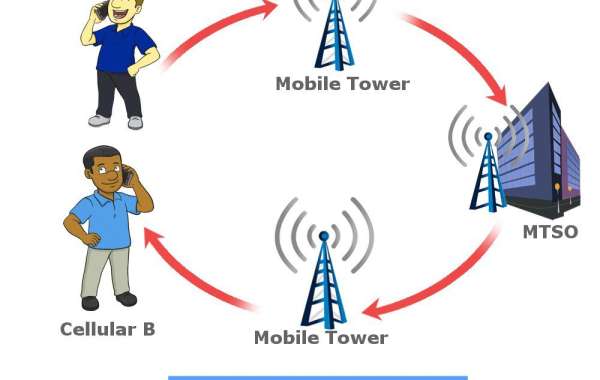Navigating the Cellular Networks Market: An In-Depth Analysis
The cellular networks market stands at the forefront of technological innovation, driving seamless connectivity and communication across the globe. This article provides comprehensive insights into the cellular networks market, encompassing the market overview, key market segments, key companies, market drivers, regional insights, and industry latest news. The Cellular Networks market industry is projected to grow from USD 0.5 Billion in 2023 to USD 3.5 Billion by 2032, exhibiting a compound annual growth rate (CAGR) of 27.10% during the forecast period (2023 - 2032).
Market Overview:
The cellular networks market has undergone remarkable transformation, evolving from traditional voice-centric networks to high-speed data networks that enable a wide range of applications and services. With the advent of 5G technology, cellular networks are poised to revolutionize industries, enabling ultra-fast data speeds, low latency, and support for a massive Internet of Things (IoT) ecosystem. The market is characterized by relentless innovation, aiming to meet the ever-growing demand for mobile connectivity and data services.
Get Free Sample PDF Brochure - https://www.marketresearchfuture.com/sample_request/4654
Key Market Segments:
The cellular networks market encompasses several key segments, including technology generation, network infrastructure, and end-user applications. Technology generations such as 2G, 3G, 4G, and the emerging 5G networks cater to diverse connectivity needs, each offering unique capabilities and performance. Network infrastructure segments include base stations, small cells, and backhaul solutions, essential for expanding network coverage and capacity. Furthermore, end-user applications span across consumer mobile broadband, enterprise connectivity, IoT, and mission-critical communication, each driving specific requirements for cellular networks.
Key Companies:
The cellular networks market is dominated by prominent players at the forefront of network infrastructure and technology development. Companies like Ericsson, Nokia, Huawei, and Samsung have demonstrated leadership in providing end-to-end cellular network solutions, encompassing radio access, core network, and network management systems. Additionally, wireless carriers and service providers such as Verizon, AT&T, China Mobile, and Vodafone play a pivotal role in deploying and operating cellular networks, offering a wide range of mobile services to consumers and enterprises.
Market Drivers:
The cellular networks market is driven by a myriad of factors, including the insatiable demand for high-speed mobile broadband, the proliferation of connected devices, and the emergence of new applications that require ultra-reliable and low-latency communication. The impending rollout of 5G networks has spurred investments in network infrastructure, with a focus on enabling transformative use cases, such as autonomous vehicles, augmented reality, and smart cities. Moreover, the convergence of cellular networks with edge computing and cloud technologies is expected to unlock new opportunities for distributed applications and services.
Regional Insights:
The cellular networks market exhibits diverse regional dynamics, influenced by factors such as technological adoption, regulatory policies, and market maturity. North America and East Asia have been early adopters of advanced cellular technologies, with substantial investments in 5G network deployments and trials. The European market has also witnessed significant momentum in 5G adoption, driven by collaborative initiatives between network operators and industry stakeholders. Meanwhile, emerging economies in Asia-Pacific and Latin America are embracing cellular networks to bridge the digital divide and enable socio-economic development.
Buy Now Premium Research Report - https://www.marketresearchfuture.com/checkout?currency=one_user-USD&report_id=4654
Industry Latest News:
Recent developments in the cellular networks market include the commercialization of standalone 5G networks, enabling operators to leverage the full potential of 5G technology for diverse use cases, from enhanced mobile broadband to massive IoT deployments. Furthermore, the integration of network slicing capabilities in 5G networks has garnered attention, allowing operators to dynamically allocate network resources based on specific application requirements, paving the way for differentiated services. Additionally, the industry has seen advancements in Open RAN (Radio Access Network) architectures, fostering interoperability and innovation across network equipment vendors.
In conclusion, the cellular networks market continues to drive connectivity evolution, ushering in an era of pervasive and intelligent connectivity that underpins digital transformation across industries. As the market evolves, key players are expected to focus on advancing 5G technologies, expanding network coverage, and unlocking the potential of cellular networks to fuel innovation and economic growth. The future of cellular networks holds promise for enabling a connected world, where ubiquitous and reliable connectivity serves as the foundation for a myriad of transformative applications and services.
Cellular Networks Market Highlights:
Cellular Networks Market Trends
Cellular Networks Market Analysis




